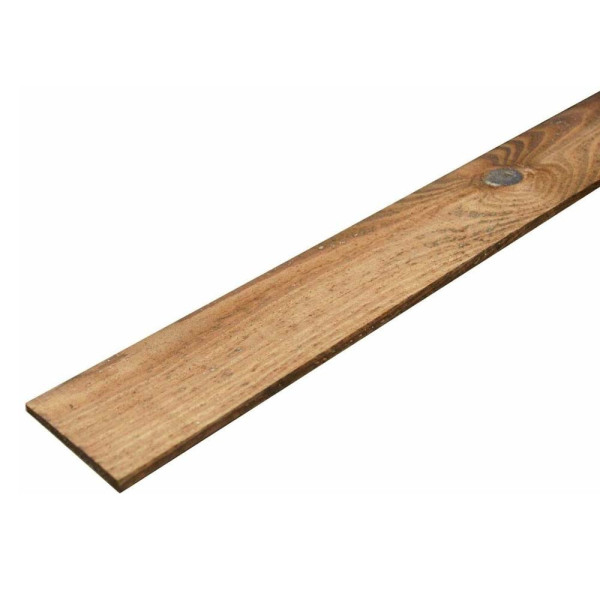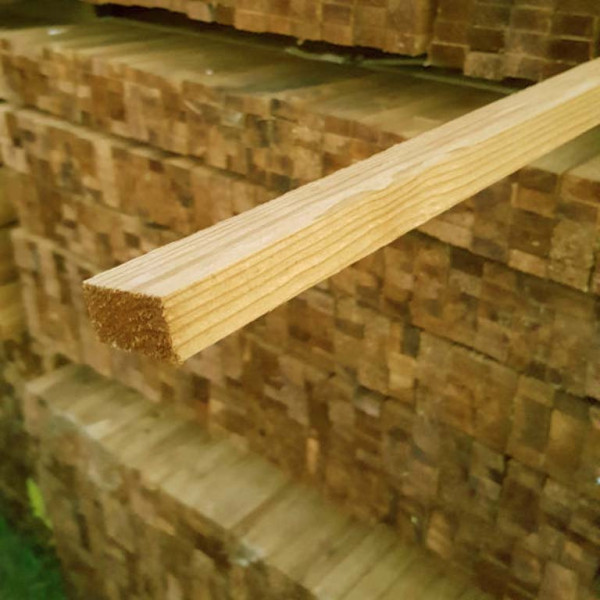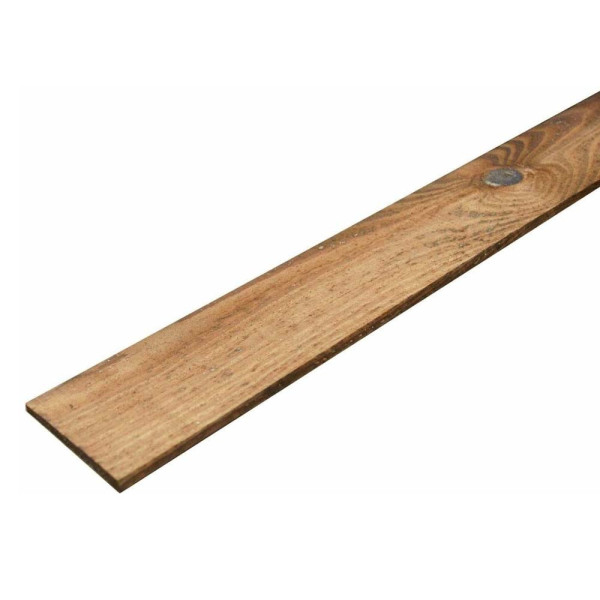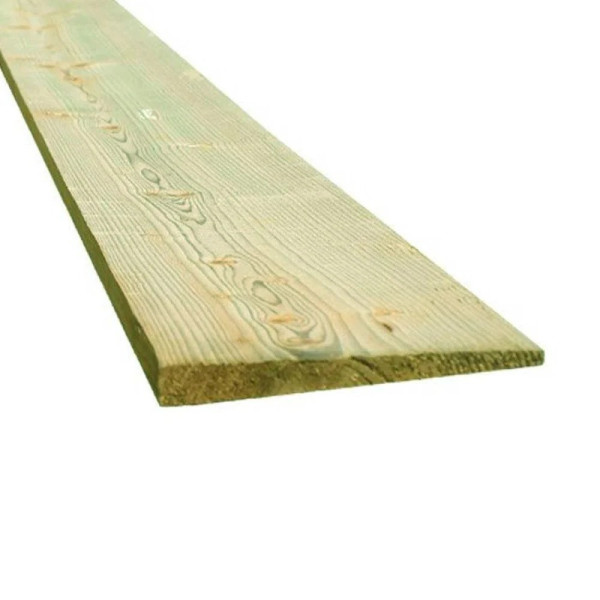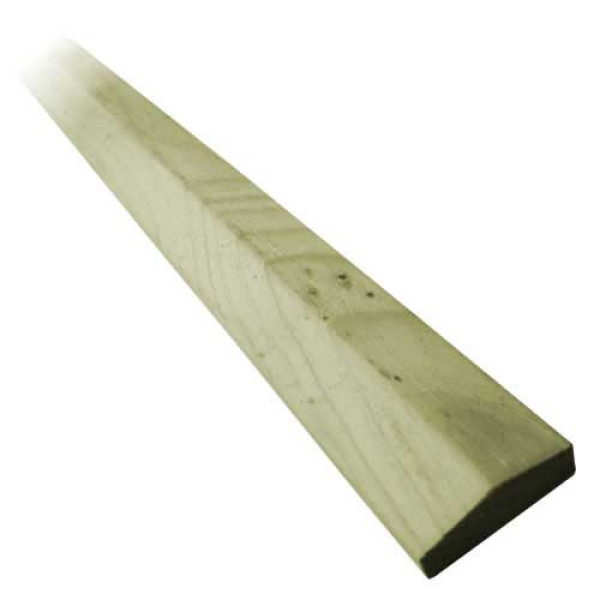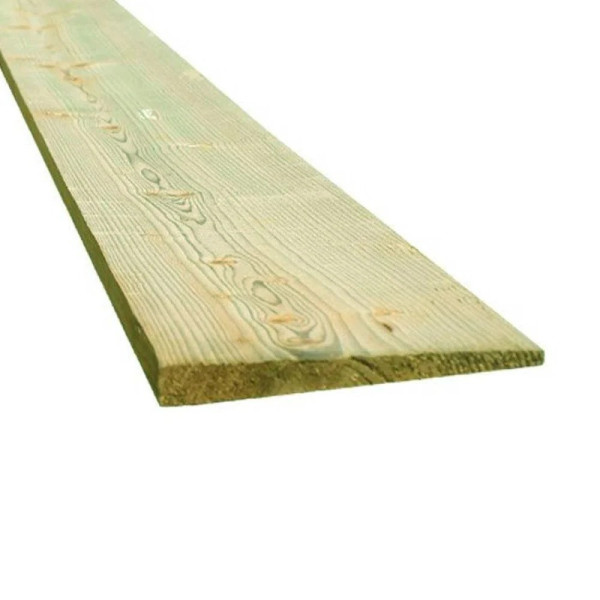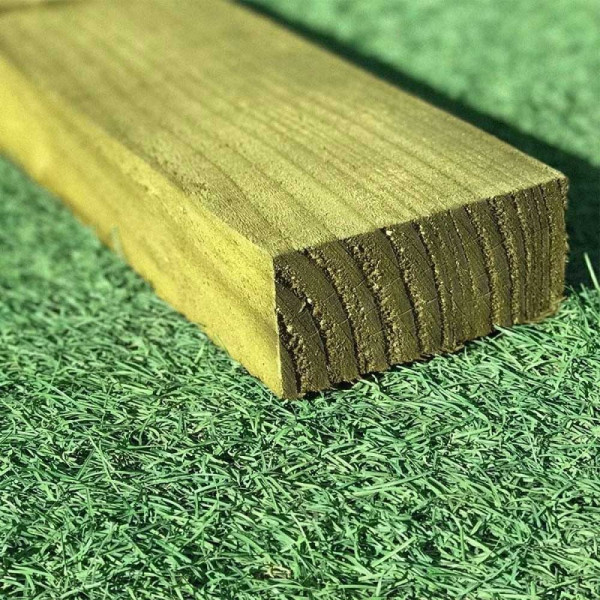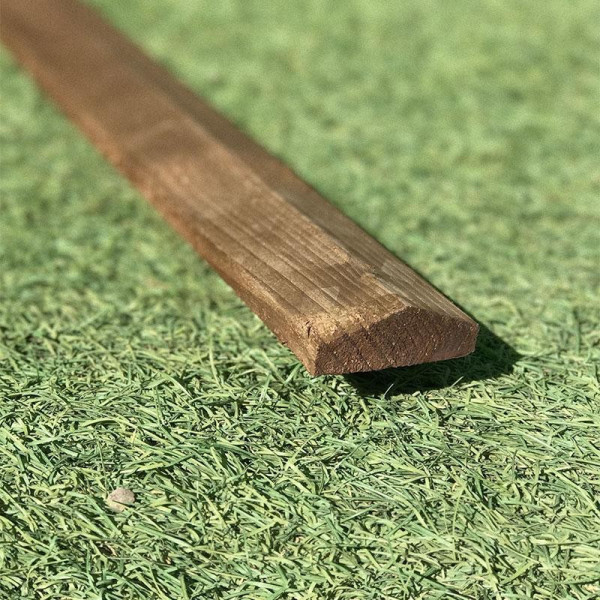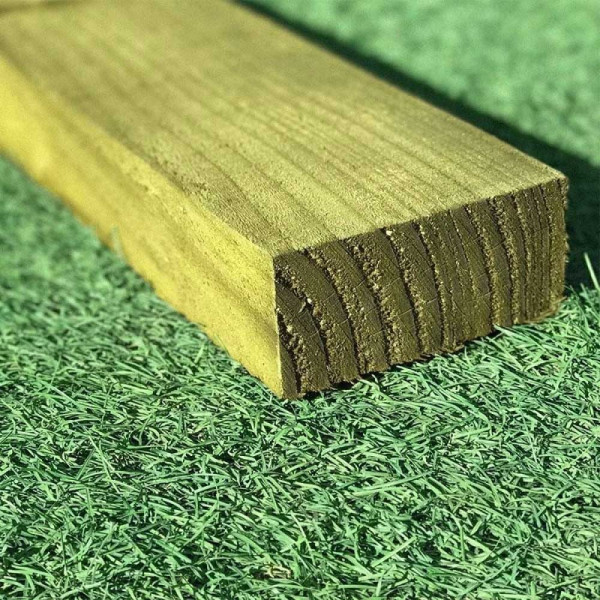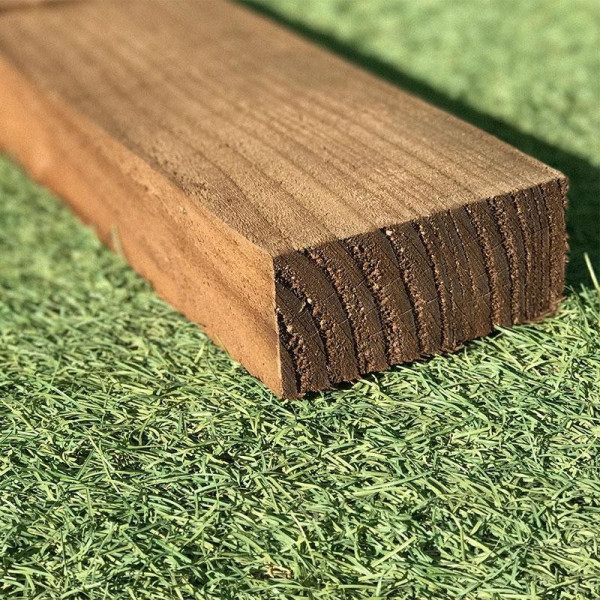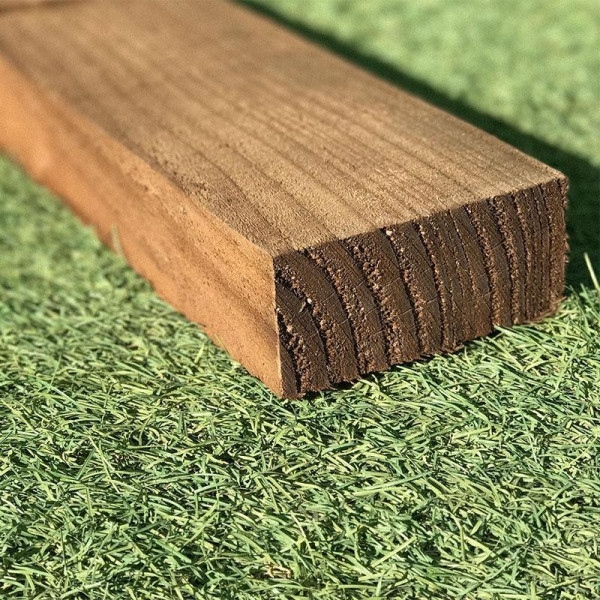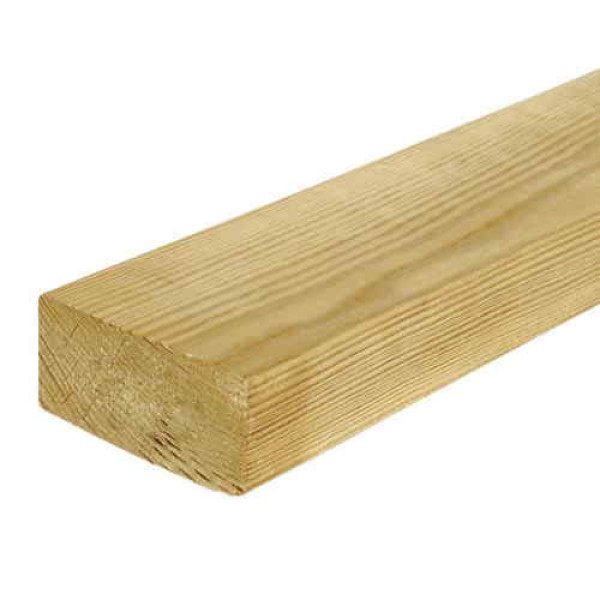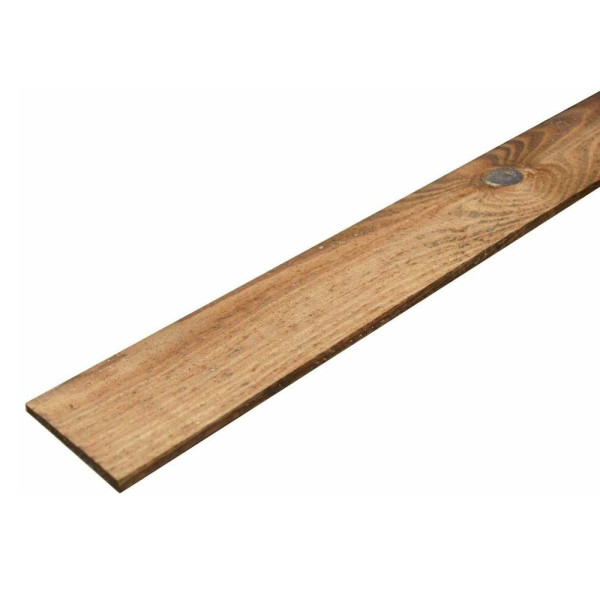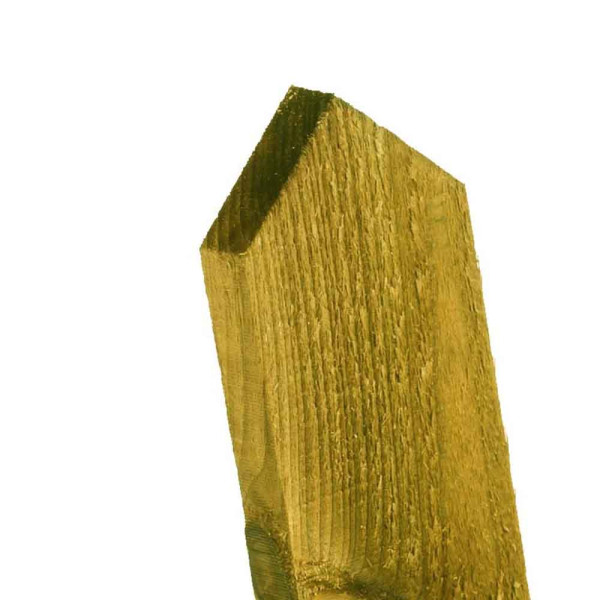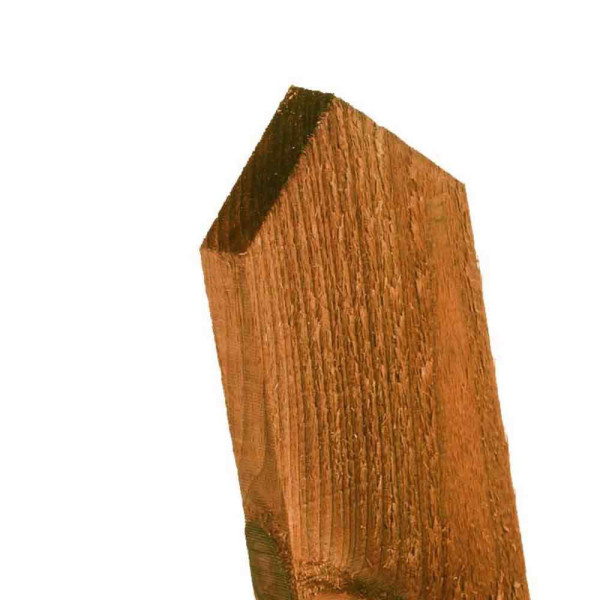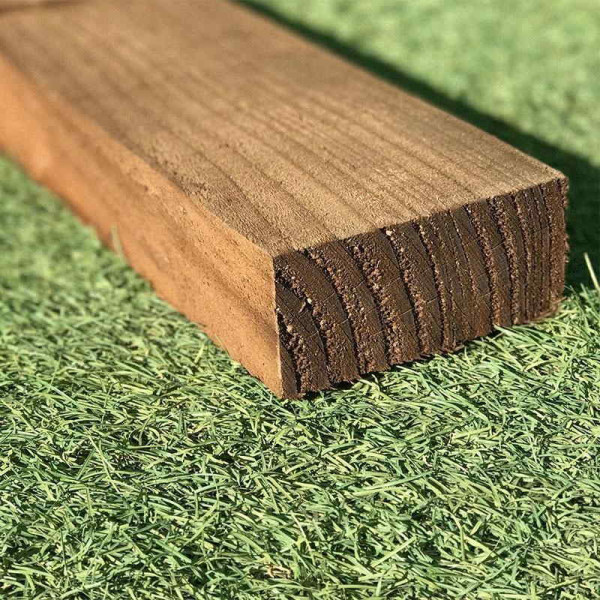Timber
Discover the durability and beauty of our 1.8m x 125x22mm 2EX Feather Edge Board, meticulously pressure-treated in a rich brown to ensure both longevity and aesthetic appeal for your outdoor space. Crafted for excellence, these boards are an ideal choice for those looking to construct a robust, weather-resistant fence that stands the test of time.
..
from
£1.89
Ex Tax:£1.58Introducing the 1.83m x 38x16mm Trellis Batten, a must-have for any garden enthusiast looking to add a touch of elegance and durability to their outdoor space. Crafted from rough sawn timber and pressure treated in green, this batten offers a rustic appeal that effortlessly blends with the natural elements of your garden. The pressure treatment ens..
from
£1.19
Ex Tax:£0.99Discover the durability and aesthetic appeal of our 1.5m x 125x22mm 2EX Feather Edge Board, meticulously crafted for your fencing projects. Each board is pressure treated with a rich brown hue, ensuring long-lasting resilience against the elements and a stunning finish that complements any garden or outdoor space.
Our feather edge boards are speci..
from
£1.59
Ex Tax:£1.33Introducing the 1.83m x 38x16mm Trellis Batten, a must-have for any garden enthusiast looking to add a touch of elegance and durability to their outdoor space. Crafted from rough sawn timber and pressure treated in a rich brown hue, this trellis batten offers both aesthetic appeal and long-lasting performance. Its rustic finish and robust construct..
from
£1.19
Ex Tax:£0.99Discover the ultimate solution for your outdoor fencing projects with our 1.2m x 125x22mm 2EX Feather Edge Board, pressure treated in a rich green hue. Each board is meticulously crafted to ensure durability, providing a robust solution that stands the test of time. With enhanced resistance against rot and fungal decay, these boards not only offer ..
from
£1.29
Ex Tax:£1.08Discover the perfect finishing touch for your fencing project with our 1.83m x 45x16mm Fence Capping, expertly designed to enhance the durability and appearance of your garden fence. Each piece of capping is meticulously crafted from high-quality timber, ensuring a snug fit atop your fence panels, providing them with additional protection against t..
from
£1.29
Ex Tax:£1.08The 1.8m x 125x22mm 2EX Feather Edge Board is a premium choice for those looking to build a sturdy and visually appealing fence. Pressure treated with a green finish, this board is designed to resist rot, fungal decay, and insect infestation, ensuring your outdoor projects remain robust and attractive for years to come. Each board measures 1.8 mete..
from
£1.89
Ex Tax:£1.58Introducing the pinnacle of garden fencing solutions - the 1.83m x 75x32mm Fence Panel Backrail, meticulously crafted for both durability and aesthetic appeal. This premium backrail is pressure treated with a vibrant green finish, ensuring long-lasting protection against rot, decay, and insect damage. Its robust construction and dimensions make it ..
from
£3.09
Ex Tax:£2.58Introducing our robust and durable 1.83m x 75x32mm Fence Panel Backrail, the backbone of your garden's privacy and security. Each backrail is meticulously crafted to ensure the utmost strength, providing unparalleled support to your fencing panels.
Pressure-treated with a rich brown finish, this backrail is designed not only for its aesthetic appe..
from
£3.09
Ex Tax:£2.58Introducing our premium 1.83m x 45x16mm Fence Capping, the perfect finishing touch to any garden fencing project. Crafted with meticulous attention to detail, this fence capping not only enhances the aesthetic appeal of your outdoor space but also provides an added layer of protection to your fence panels.
Pressure treated in a rich brown hue, thi..
from
£1.29
Ex Tax:£1.08Introducing our premium 3.6m 87x38mm MOT Rail, a must-have for your next fencing project. Crafted with durability and longevity in mind, this rail has been meticulously pressure treated to ensure it stands the test of time against the elements. Its green treatment not only enhances its resistance to rot and insect infestation but also adds a visual..
from
£9.39
Ex Tax:£7.83The 0.9m x 125x22mm 2EX Feather Edge Board in pressure-treated brown is a top-tier choice for anyone embarking on fencing or cladding projects. Engineered for durability, this board undergoes a meticulous pressure treatment process, ensuring it stands resilient against the elements. The rich brown finish not only enhances the natural beauty of the ..
from
£0.99
Ex Tax:£0.83Discover the foundation of durable and robust construction with our 2.4m 100x47mm Wallplate, expertly designed to meet your building needs. This essential component, pressure treated for long-lasting performance, boasts a rich brown hue that adds a touch of elegance to its sturdy functionality. Crafted for resilience, our wallplate ensures that you..
from
£8.89
Ex Tax:£7.41Discover the foundation of robust, long-lasting outdoor structures with our 1.8m 100x47mm Wallplate. Expertly crafted to meet the highest standards of durability and strength, this essential component is ideal for a variety of construction projects. Each wallplate has undergone a rigorous pressure treatment process, ensuring it is well-protected ag..
from
£6.69
Ex Tax:£5.58Discover the ideal solution for your next outdoor project with our 1.5m x 125x22mm 2EX Feather Edge Board. Each board is meticulously crafted to ensure durability and longevity in all weather conditions. Thanks to the pressure-treated green finish, not only does the wood boast an attractive hue, but it also benefits from enhanced protection against..
from
£1.59
Ex Tax:£1.33Discover the foundation of durable and robust construction with our 2.4m 100x47mm Wallplate, expertly designed to meet your building needs. This essential component, pressure treated for long-lasting performance, boasts a rich green hue that adds a touch of elegance to its sturdy functionality. Crafted for resilience, our wallplate ensures that you..
from
£8.89
Ex Tax:£7.41Discover the high-quality 1.65m x 125x22mm 2EX Feather Edge Board in green, a top choice for your fencing projects. Each board is meticulously pressure treated, ensuring long-lasting durability and resistance to rot and insect infestations. This treatment not only extends the life of your fence but also maintains its striking appearance with minima..
from
£1.79
Ex Tax:£1.49Discover the perfect solution for your garden fencing projects with our 0.9m x 125x22mm 2EX Feather Edge Board, expertly crafted to blend durability with aesthetic appeal. Each board is meticulously pressure-treated with a distinctive green finish, ensuring long-lasting protection against rot, decay, and insect infestation. This treatment not only ..
from
£0.99
Ex Tax:£0.83Discover the perfect blend of durability and aesthetic appeal with our 1.65m x 125x22mm 2EX Feather Edge Board, pressure-treated in a rich brown hue. Designed to elevate the look of any garden or outdoor space, these boards not only enhance the natural beauty of your surroundings but also provide unparalleled resilience against the elements. Their ..
from
£1.79
Ex Tax:£1.49Discover the timeless elegance and durability of our 0.9m x 75x19mm Point Top Picket Pale, meticulously crafted to enhance your garden's aesthetics while ensuring privacy and security. Each picket pale is pressure treated in a rich green hue, offering not only an attractive finish but also unparalleled protection against rot, fungal decay, and inse..
from
£1.29
Ex Tax:£1.08The 3.0 metre × 125 mm × 47 mm Cant Rail is crafted from a standard 125 × 47 mm plank that’s sawn diagonally to yield two matching trapezoidal rails—hence the “2EX” designation. Although two rails are produced from each plank, they’re sold individually as single three‑metre lengths, allowing you to order exactly the number you need. Each rail featu..
from
£8.79
Ex Tax:£7.33Elevate your outdoor space with our premium 1.2m x 75x19mm Round Top Picket Pale, the quintessential choice for crafting elegant and durable fencing. Each pale has been meticulously pressure treated with a rich brown finish, ensuring long-lasting beauty and resilience against the elements. This treatment not only enhances the wood's natural charm b..
from
£1.69
Ex Tax:£1.41Discover the durability and aesthetic appeal of our 1.2m x 125x22mm 2EX Feather Edge Board, expertly crafted to enhance your outdoor space. Each board has been meticulously pressure treated in a rich brown hue, ensuring both long-lasting beauty and resilience against the elements. This treatment process not only extends the lifespan of the wood but..
from
£1.29
Ex Tax:£1.08Discover the perfect addition to your garden with our 1.2m x 75x19mm Point Top Picket Pale, meticulously crafted for those who value both aesthetics and durability in their outdoor spaces. Each picket pale is pressure-treated with a rich brown hue that not only enhances its visual appeal but also ensures a long-lasting resistance against the elemen..
from
£1.69
Ex Tax:£1.41Discover the perfect addition to your garden with our 0.9m x 75x19mm Round Top Picket Pale, expertly crafted to enhance the aesthetic of any outdoor space. Each pale is meticulously pressure treated with a rich green finish, ensuring a durable and long-lasting barrier that withstands the test of time and weather.
Our picket pales are not only a pr..
from
£1.29
Ex Tax:£1.08Elevate your outdoor space with our premium 1.2m x 75x19mm Round Top Picket Pale, the quintessential choice for crafting elegant and durable fencing. Each pale has been meticulously pressure treated with a rich green finish, ensuring long-lasting beauty and resilience against the elements. This treatment not only enhances the wood's natural charm b..
from
£1.69
Ex Tax:£1.41Introducing the perfect solution for your structural and fencing needs – our 2.1m 100x47mm Wallplate. Expertly crafted to offer both durability and style, this wallplate is a must-have for any construction or landscaping project.
Finished in a rich brown hue, this product not only adds an aesthetic appeal to your outdoor space but also boasts a pr..
from
£7.79
Ex Tax:£6.49Discover the timeless elegance and durability of our 0.9m x 75x19mm Point Top Picket Pale, meticulously crafted to enhance your garden's aesthetics while ensuring privacy and security. Each picket pale is pressure treated in a rich brown hue, offering not only an attractive finish but also unparalleled protection against rot, fungal decay, and inse..
from
£1.29
Ex Tax:£1.08The 2.1m x 125x22mm 2EX Feather Edge Board is your ultimate solution for a durable and visually appealing fence. Pressure treated in a vibrant green, this board is designed to withstand the elements, ensuring longevity and resistance to decay. With its robust construction, it provides a secure and private enclosure for your garden or boundary.
Cra..
from
£2.19
Ex Tax:£1.83The 2.1m x 125x22mm 2EX Feather Edge Board from East Coast Fencing is a premium choice for anyone looking to enhance their outdoor space with a durable and stylish fencing solution. Meticulously pressure treated in a rich brown hue, this board ensures long-lasting performance and resistance against the elements. Whether you're aiming to create a se..
from
£2.19
Ex Tax:£1.83Introducing our robust 3.6m 87x38mm MOT Rail, a durable and versatile solution for all your fencing needs. Crafted with precision and designed to withstand the elements, this rail is pressure treated in a rich brown hue, ensuring longevity and maintaining its quality through all seasons.
The unique treatment process penetrates deep into the wood, ..
from
£9.39
Ex Tax:£7.83The 2.4 metre × 125 mm × 47 mm Cant Rail is machined from a standard 125 × 47 mm plank that’s sawn diagonally to yield two matching trapezoidal rails—hence the “2EX” designation. Although two rails emerge from each nominal-sized plank, they’re supplied individually as single 2.4 metre lengths, so you can order exactly the quantity you need. Pressur..
from
£6.99
Ex Tax:£5.83Discover the perfect addition to your garden with our 0.9m x 75x19mm Round Top Picket Pale, expertly crafted to enhance the aesthetic of any outdoor space. Each pale is meticulously pressure treated with a rich brown finish, ensuring a durable and long-lasting barrier that withstands the test of time and weather.
Our picket pales are not only a pr..
from
£1.29
Ex Tax:£1.08The 3.0 metre × 125 mm × 47 mm Cant Rail is crafted from a standard 125 × 47 mm plank that’s sawn diagonally to yield two matching trapezoidal rails—hence the “2EX” designation. Although two rails are produced from each plank, they’re sold individually as single three‑metre lengths, allowing you to order exactly the number you need. Each rail featu..
from
£8.79
Ex Tax:£7.33The 2.4 metre × 125 mm × 47 mm Cant Rail is crafted from a standard 125 × 47 mm plank that’s sawn diagonally to produce two matching trapezoidal rails—hence the “2EX” designation. Each rail is sold individually as a single 2.4 metre length, allowing you to order precisely the number you need for your project. The subtly tapered profile (wider at th..
from
£6.99
Ex Tax:£5.83Discover the perfect addition to your garden with our 1.2m x 75x19mm Point Top Picket Pale, meticulously crafted for those who value both aesthetics and durability in their outdoor spaces. Each picket pale is pressure-treated with a rich green hue that not only enhances its visual appeal but also ensures a long-lasting resistance against the elemen..
from
£1.69
Ex Tax:£1.41Showing 1 to 36 of 36 (1 Pages)



